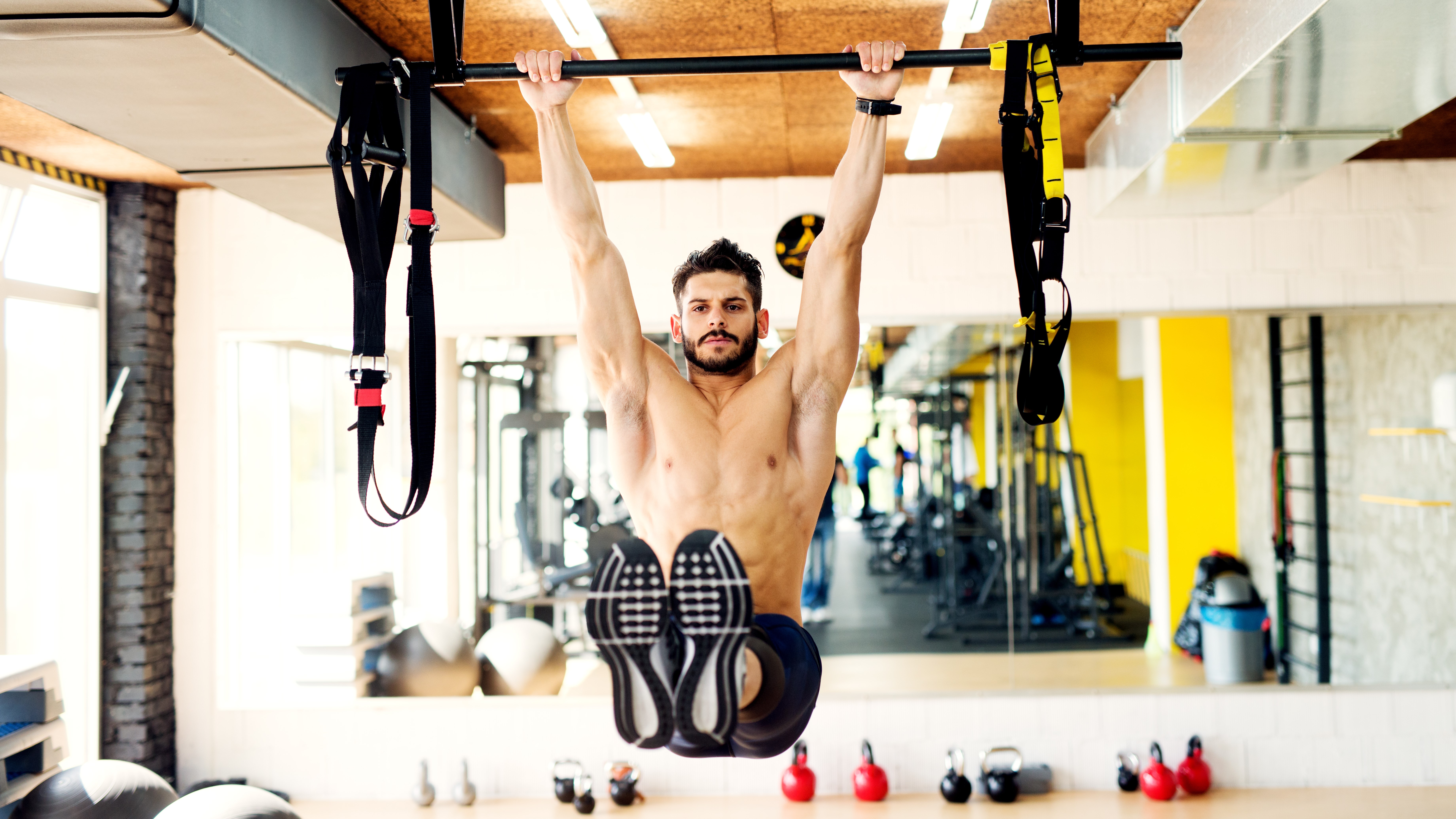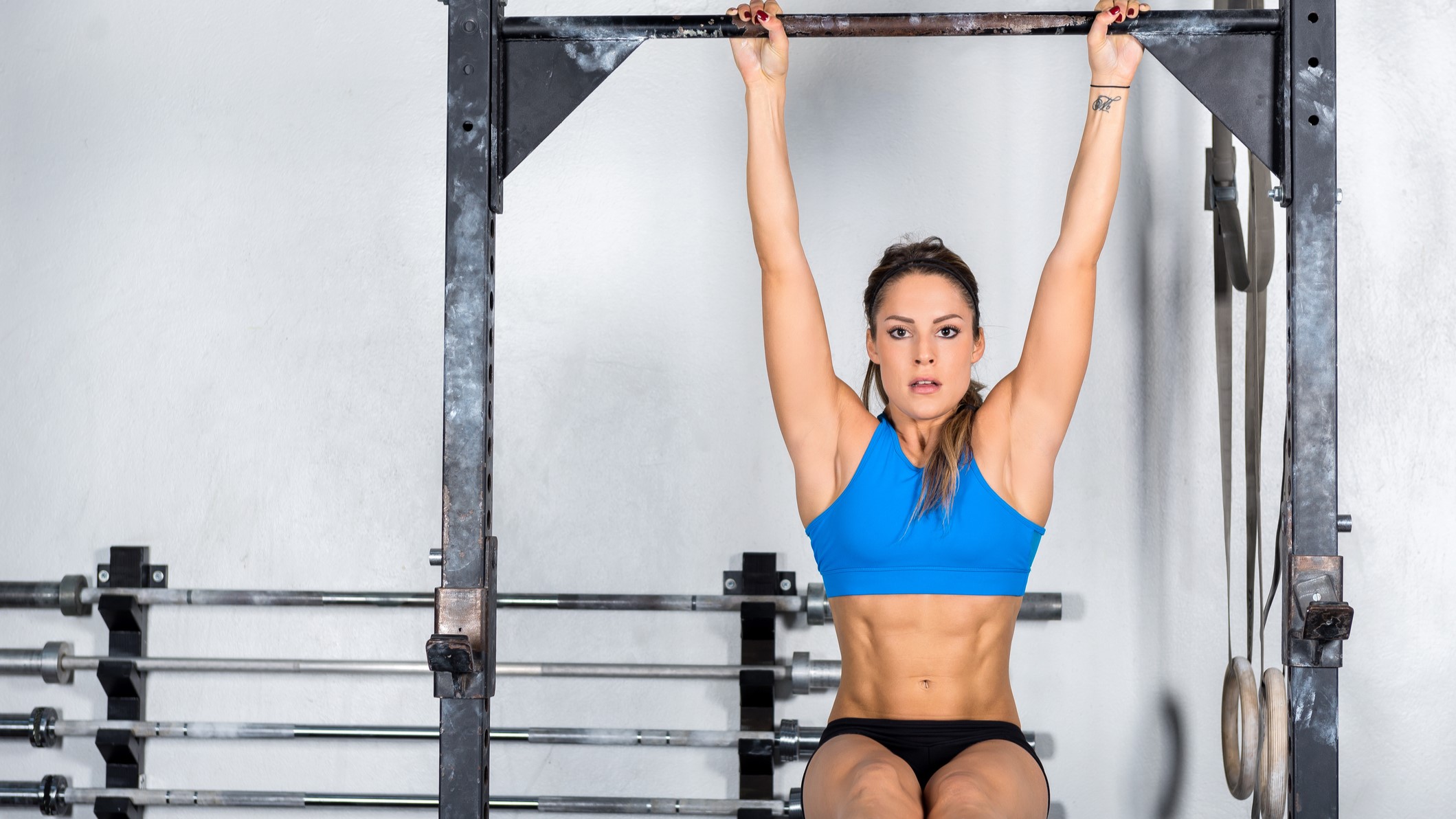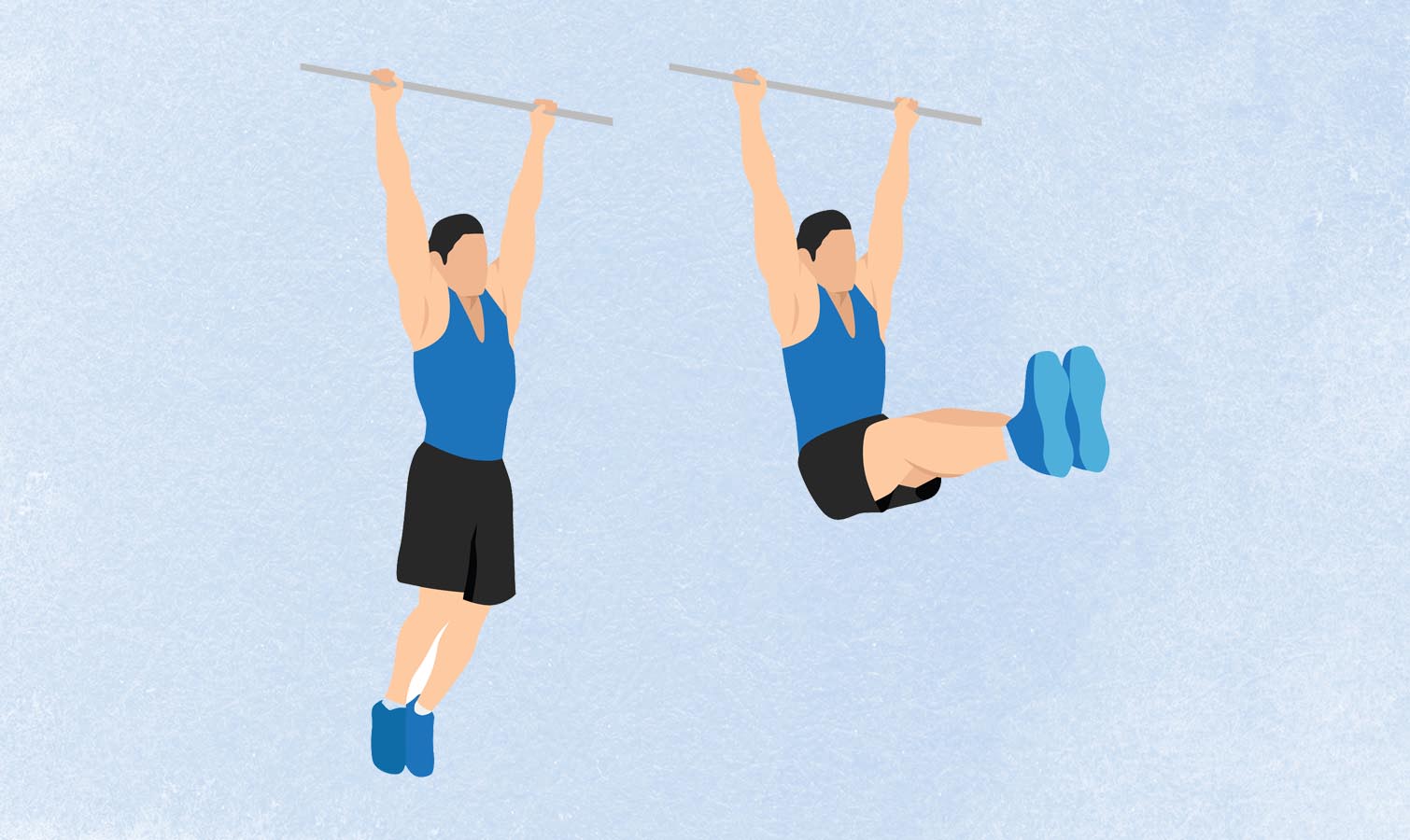
Bored of crunches and sit-ups, or fancy taking your floor-based leg raises up a notch? Say hello to the hanging leg raise, an exercise that can take a while to master but oh boy, is it worth practicing.
A hanging leg raise is not easy, but as core exercises go, this is up there in my top five. It's a brutal exercise, but it’s addictive and I’ve found myself jumping up and grabbing onto pull-up bars as often as possible to raise my legs up and down in the hope that it will do wonders for my core.
So, for my next challenge, I decided to do hanging leg raises every day for two weeks. I opted for 20 hanging leg raises, which when done properly, is pretty tough. Read on to find out what happened.
Benefits of a hanging leg raise
The big benefit of a hanging leg raise is that it works your core muscles — that’s the array of muscles around your torso. When we speak about the muscles in the core, we’re not just talking about the classic six-pack muscles (although a hanging leg raise does target these pretty heavily), but also the inner core muscles that protect the spine and organs and the obliques, which sit on the side of your torso.
As you’re hanging from a bar the aim is to use your core muscles to drive your legs up. A strong core helps with all day-to-day movement, as well as other sports and exercise. Plus, the core muscles care for your spine and help to maintain good posture, so they’re pretty essential really.
Leg raises also work the hip flexors — if you’re a runner, or you spend a lot of time sitting behind a desk, you might find you have tight hip flexors. Plus, a hanging leg raise is great at working the upper body as you hang off the bar, so your grip strength will be tested here too.

Struggling to get your legs out straight and perpendicular to your body? Firstly, be aware that this move takes practice — you likely won’t master it overnight. Start with hanging knee tucks instead. Grab the bar with an overhand grip and with arms straight, let your body hang. Then, keeping your core engaged, drive your knees up together to your stomach, or as high as you can, then slowly lower back down to straighten your legs.
How to do a hanging leg raise
For this move, you’ll need a pull-up bar. If you can’t reach the bar, place a step underneath to make it easier to grab.

- Grab the bar with an overhand grip and let your body hang down, with arms straight up by your ears.
- Engage your core and whilst keeping the legs straight, back straight, and gaze forwards, bend at the hips and lift your legs up together so that they’re perpendicular to the ground. Pause here, then slowly lower your legs back down.
- Keep repeating this move for the allotted reps.
- As you do this, avoid swinging your body back and keep your arms and torso still and engaged. it’s just your core and hip flexors doing the work here.
I did 20 hanging leg raises every day for two weeks and this is what happened
My hips are tight
For the first few days of this challenge, I struggled to get my legs up straight and perpendicular, not because my core couldn’t handle it, but because my hip flexors were so tight and lacked serious mobility.
I realized mobility sessions would be a must before my leg raise session as this challenge progressed. The best moves? For me, I love a deep forward lunge to give the hip flexors a nice stretch. The seated butterfly stretch is also great — to do this, sit on the floor with knees bent and the soles of your feet together and gently push down on your knees. It hurts a little but it’s oh-so-worth it.
My hip mobility did improve
Because of all my pre-leg raise mobility, I noticed these hanging leg raises become easier as the days went on. My hip flexors became stronger, as I completed my reps but I also think that my muscles became a little more accustomed to this exercise.
The shoulder burn is real
Often, I couldn’t feel my ab muscles working because my arms were crying out from hanging off a bar for so long. In fact, it was my shoulders that took much of the burden during these hanging leg raises.
Hanging off a bar is great for posture
Letting my body just hang was an excellent feeling — it’s liberating, but also it helps remove so much tension as your body just hangs. It’s also great for engaging the muscles in the back, which help to maintain good posture and I felt it opened up my chest.
Say hello to calluses
My poor, poor hands. Much like when Tom’s Guide asked me to do five minutes of kettlebell snatches a day, the palms of my hands developed several calluses — areas of hard skin — due to gripping onto a bar. My soft hands definitely toughened up a bit during this challenge!
I struggled to do more than a handful before my form rapidly went downhill
With my tight hip flexors, it wasn’t long before I found myself struggling to maintain a decent set of hanging leg raises. As my body tired, I began to swing with every rep as I used other muscles to drive my leg upwards, meaning less strain on my hip flexors and core. Practice makes perfect, however, and by the end of the two weeks, I was definitely moving with better form.
You can target the obliques
By simply adding in a rotation of the legs and knees during a hanging leg raise, you can place a much greater emphasis on your obliques. It’s tricky, I won’t lie, but if you can master it, then the obliques will get a great workout.
I did hanging leg raises every day — here’s my verdict
Hanging leg raises are a pretty advanced move, and they can take a while to master, but when you do, the benefits are pretty great. After two weeks of doing hanging leg raises every day, I noticed an improvement in my hip flexor strength and mobility as my legs managed to come up together and form a straight line, perpendicular to the ground.
Naturally, my core muscles did benefit greatly from doing these hanging leg raises but my hip flexors and upper body also reaped rewards. All in all, I’d say give this challenge a try. Hanging leg raises will 100% remain a staple move in my workouts, but probably not 20 of them a day.




![Nevada Math Prof Alleges Discipline for "Voic[ing] Concerns About … the Math Department … Lower[ing] Its Curriculum Standards"](https://images.inkl.com/s3/publisher/cover/212/reason-cover.png?w=600)


